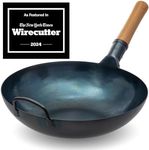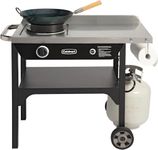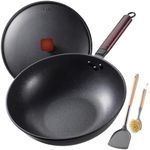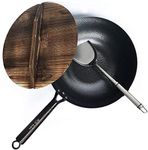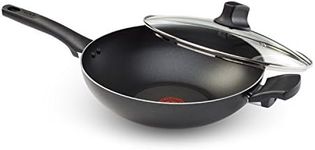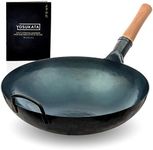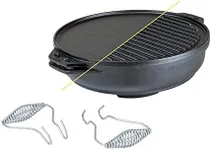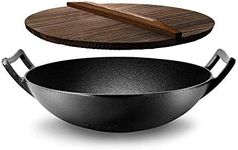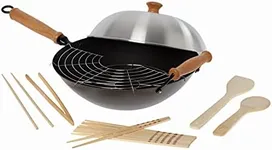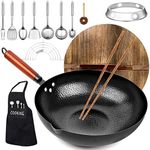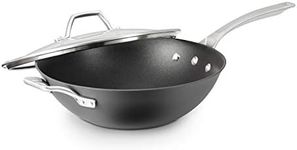Buying Guide for the Best Woks
Choosing the right wok can make a big difference in your cooking experience, especially if you enjoy stir-frying, deep-frying, or steaming. Woks come in various materials, sizes, and shapes, each suited to different cooking styles and kitchen setups. When picking a wok, think about how you plan to use it, the type of stove you have, and how much food you usually cook. Understanding the key features will help you select a wok that fits your needs and makes cooking more enjoyable.MaterialThe material of a wok affects how it heats up, how easy it is to maintain, and how it influences the flavor of your food. Common materials include carbon steel, cast iron, stainless steel, and nonstick coatings. Carbon steel is popular for its quick heating and traditional feel, but it needs seasoning and regular care to prevent rust. Cast iron holds heat well and is great for slow cooking, but it's heavier and also needs seasoning. Stainless steel is easy to maintain and doesn't rust, but it may not heat as evenly. Nonstick woks are easy to clean and good for low-fat cooking, but they can't handle very high heat. Think about how much maintenance you're willing to do and what kind of cooking you prefer when choosing the material.
SizeWoks come in different sizes, usually measured by diameter. Smaller woks (10-12 inches) are good for one or two people or for kitchens with limited space. Medium woks (12-14 inches) are versatile and suitable for most families. Large woks (14 inches and above) are best for cooking for a crowd or making big batches. Choose a size that matches the number of people you usually cook for and the amount of storage space you have.
ShapeWoks can have a round bottom or a flat bottom. Round-bottom woks are traditional and work best on gas stoves with a wok ring, allowing for easy tossing and even heating. Flat-bottom woks are designed for electric or induction stoves, providing better contact with the heating element. Pick a shape that matches your stove type to ensure stability and efficient cooking.
Handle TypeWoks typically have either two small loop handles or one long handle with a small helper handle. The long handle makes it easier to toss and stir food, while the helper handle provides extra support when lifting. Two loop handles are common in larger or heavier woks and are good for carrying but less convenient for tossing. Consider your cooking style and how comfortable you are with handling hot cookware when choosing the handle type.
WeightThe weight of a wok affects how easy it is to maneuver, especially when tossing ingredients. Lighter woks are easier to lift and toss, making them suitable for quick stir-fries. Heavier woks retain heat better and are more stable on the stove, which is helpful for slow cooking or deep-frying. Think about your strength and how you plan to use the wok to decide what weight is best for you.
LidSome woks come with a lid, which is useful for steaming, simmering, or keeping food warm. If you plan to use your wok for more than just stir-frying, a lid can add versatility. If you already have a lid that fits or don't plan to use these cooking methods, this may not be as important.
